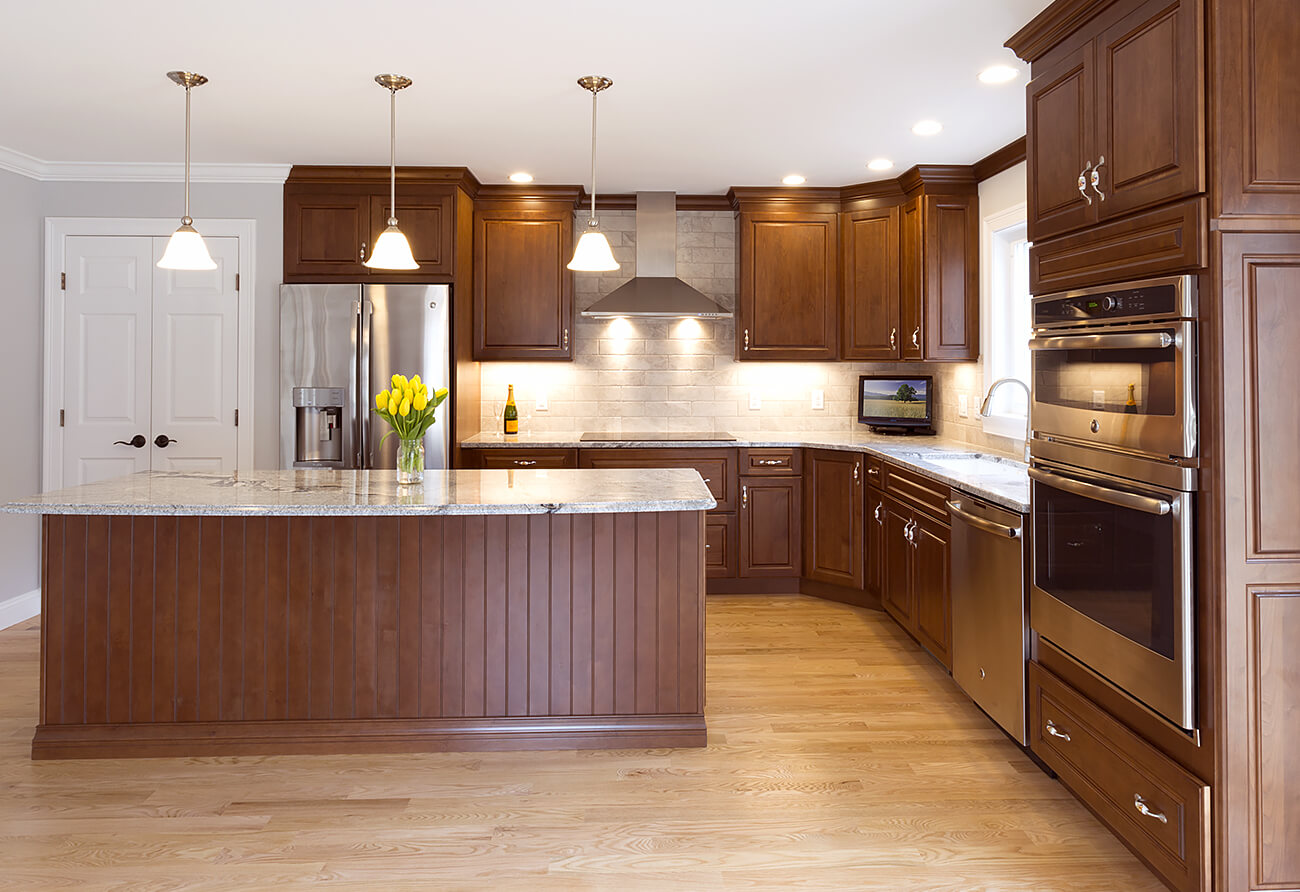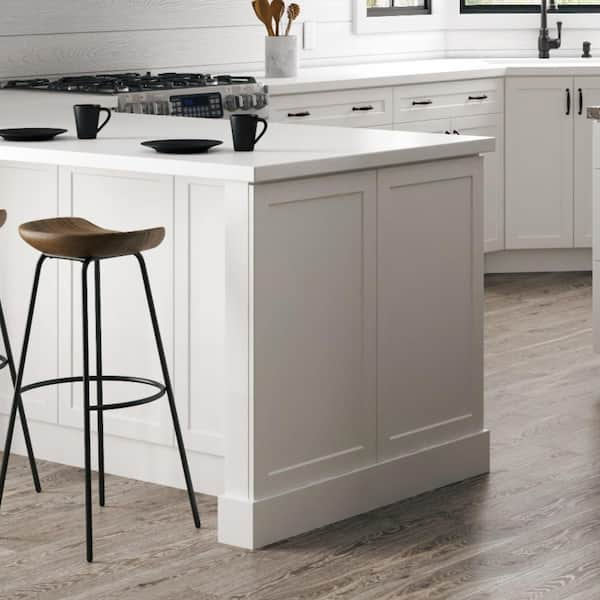When it comes to kitchen design, every detail matters. One often overlooked element is kitchen cabinet decorative end panels. These panels not only bring a finishing touch to your cabinetry but also create a cohesive look in your kitchen. In this article, we will explore everything you need to know about decorative end panels, from styles and materials to installation tips and FAQs, ensuring your kitchen is as beautiful as it is functional.
What Are Decorative End Panels?
Decorative end panels are the pieces of material that cover the exposed sides of kitchen cabinets. They ensure that your cabinetry looks polished and complete, especially in open-concept kitchens where these sides are visible. Decorative end panels come in various styles, materials, and finishes, allowing homeowners to customize their kitchens according to their personal taste.
Importance of Decorative End Panels
Decorative end panels serve multiple purposes in kitchen design:
- Aesthetics: They provide a finished look and can be designed to match or complement the cabinet doors.
- Protection: They protect the cabinet sides from damage, moisture, and wear.
- Value: Well-designed end panels can enhance the overall value of your kitchen.

Types of Decorative End Panels
There are several types of decorative end panels available, each with its own unique characteristics. Here are some popular options:

1. Solid Wood End Panels
Solid wood end panels are a classic choice. They can be stained or painted to match your cabinets. This option offers durability and a timeless appearance.

Pros:
- Highly durable and long-lasting
- Can be customized easily
Cons:
- Can be more expensive than other materials
- May require regular maintenance to prevent warping

2. Laminate End Panels
Laminate end panels are made from synthetic materials designed to mimic the look of wood or other finishes. They are more affordable and available in a wide range of colors and patterns.

Pros:
- Cost-effective
- Easy to clean and maintain
Cons:
- May not be as durable as solid wood
- Can be prone to scratching

3. Veneer End Panels
Veneer panels consist of a thin slice of wood glued onto a core panel. They offer a wood-like appearance at a fraction of the cost of solid wood.

Pros:
- Provides a natural wood look
- More affordable than solid wood
Cons:
- Less durable than solid wood
- Can be damaged if exposed to moisture
Design Styles for Decorative End Panels
Choosing the right design style for your decorative end panels can elevate the entire kitchen aesthetic. Here are some popular styles:
1. Shaker Style
This classic design features a simple, clean look with a flat panel surrounded by a frame. Shaker style end panels work well in traditional and modern kitchens.
2. Beaded Style
Beaded end panels have a textured appearance thanks to the addition of vertical grooves. This style adds warmth and character, ideal for farmhouse or cottage-style kitchens.
3. Contemporary Style
Sleek and minimalistic, contemporary end panels focus on smooth surfaces and clean lines. They complement modern kitchen designs effectively.
Choosing the Right Material for Your End Panels
When selecting the right material for your decorative end panels, consider the following factors:
1. Budget
Your budget will largely dictate which materials are viable options. Solid wood tends to be the most expensive, while laminate is the most budget-friendly.
2. Kitchen Style
Consider your kitchen’s overall design style. Traditional kitchens may benefit from wood panels, while modern designs could look great with laminate or sleek veneer.
3. Maintenance
Some materials require more upkeep than others. If you have a busy household, a low-maintenance material like laminate may be a better choice.
How to Install Decorative End Panels
Installing decorative end panels can be a straightforward DIY project or a task for a professional. Here’s a step-by-step guide if you choose to tackle it yourself:
Tools You Will Need
- Measuring tape
- Cutting tool (circular saw or jigsaw)
- Wood glue or adhesive
- Clamps
- Screws and screwdriver
- Paint or stain (if applicable)
Steps for Installation
- Measure Your Cabinets: Ensure you measure the height and width of the cabinet side where the panel will be installed.
- Cut the Panels: Using your cutting tool, cut the end panels to size, taking care to ensure smooth edges.
- Pre-Drill Holes: If you plan to screw the end panels into place, pre-drill holes into the cabinet frame.
- Attach the Panels: Apply wood glue along the edge of the cabinet, position the panel in place, and secure it with screws or clamps.
- Finish the Edges: Once attached, ensure the edges are sealed and finished with paint or stain as needed.
Comparison Table: Materials for Decorative End Panels
| Material | Cost | Durability | Maintenance | Style Options |
|---|---|---|---|---|
| Solid Wood | High | Very High | Moderate | Classic, Rustic |
| Laminate | Low | Moderate | Low | Modern, Colorful |
| Veneer | Medium | Moderate | Moderate | Natural, Elegant |
Pros and Cons of Decorative End Panels
Pros
- Enhances the finished look of kitchen cabinets.
- Protects the sides of cabinets from damage.
- Available in a wide range of styles and materials for customization.
- Increases the overall value of your kitchen.
Cons
- Can add to the overall cost of cabinetry.
- Installation might require professional help, depending on complexity.
FAQs About Kitchen Cabinet Decorative End Panels
1. Are decorative end panels necessary?
No, they are not strictly necessary, but they enhance the overall appearance and protect the cabinetry.
2. Can I install decorative end panels myself?
Yes, with the right tools and following the correct procedure, it’s a project many homeowners can tackle themselves.
3. How do I clean decorative end panels?
Most decorative end panels can be cleaned with mild soap and water. Avoid harsh chemicals that can damage the finish.
4. What styles of end panels are available?
Available styles include Shaker, Beaded, Contemporary, and many more, catering to various kitchen aesthetics.
5. How do I choose the right material for my end panels?
Consider factors like budget, kitchen style, and maintenance when selecting the suitable material for your decorative end panels.
Conclusion
Decorative end panels are a fantastic way to elevate your kitchen’s design while adding functionality and protection to your cabinetry. Whether you choose solid wood, laminate, or veneer, the right panels can make a significant impact on your kitchen’s overall aesthetic. By carefully considering your style preferences, budget, and maintenance needs, you can select the perfect end panels to achieve the kitchen of your dreams.
With this comprehensive guide, you’re now equipped to make informed decisions about kitchen cabinet decorative end panels. Happy decorating!